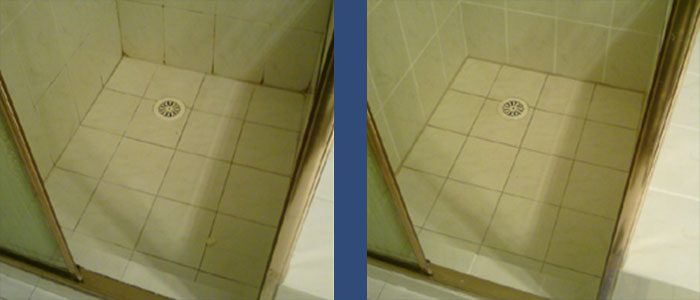This article which follows pertaining to Preventing Water Damage in the Bathroom is absolutely captivating. Have a go and draw your own assumptions.

The restroom is extremely prone for damp buildup and possible water damages due to the regular use of water in it. This short article provides easy inspection strategies to aid discovering water damage risks.
The regular use water in the restroom makes it extremely at risk for damp build-up as well as potential water damages. By inspecting it consistently, you can lower water associated damages.
The adhering to set of evaluations is simple to execute and also should be done as soon as in every 3 months in order to keep your shower room healthy as well as to stop potential water damages caused by the bath tub, the shower, pipe joints and also plumbing, sinks, cupboards, and also the toilet
Do not forget doing these evaluations and also be extensive while doing them. Remember that these easy examinations can conserve you a great deal of cash by providing early indicators for water damage
Tub as well as Shower
The shower as well as bathtub require unique attention and also maintenance. Examine the tiles and change if fractured. See to it that there is no missing out on grout in between the tiles. Check and also replace fractured caulking at joints where the walls fulfill the floor or the tub. Clogged drains as well as pipelines problems will certainly prevent the tub from drying out as well as might show major issues under the bathtub. Talk to a professional promptly to prevent structural damages. Pay attention to discolorations or soft locations around the bath tub wall surfaces as they may suggest an interior leakage.
Plumbing
Signs for water damages are tough to detect considering that the majority of pipes are installed inside the wall surfaces.
Pay unique focus to flooring as well as wall surfaces dampness and stains as they may suggest an unnoticeable plumbing trouble. Examine moisture levels in adjacent areas as well.
Sinks and Cabinets
Sinks as well as cupboards are revealed to dampness and humidity everyday as well as are usually forgotten. Inspect frequently under the sink and also on the kitchen counter over it. Fix any kind of drip in the catch as it may suggest drain issues. Browse the sink, sluggish draining pipelines might show an obstructed drainpipe. Change sink seals if they are cracked or loose.
The Toilet
The toilet is a susceptible water junction. Check the water lines and search for leakages around the commode seat, in the tube, and also under the water container. If you find any type of indications of wetness on the floor around the bathroom, check for leaks in the toilet rim and tank seals.
Be aware that hanging commode dish antiperspirants boosts the possibilities for blockages.
10 TIPS TO PREVENT WATER DAMAGE IN THE BATHROOM
The average household uses approximately 80-100 gallons of water per person per day. For a family of 4, that's almost 2,500 gallons of water a week! The largest portion of this consumption comes from bathroom use. Flushing the toilet uses the most water, followed by taking a shower or bath. With that much water running through the home, water damage in the bathroom is bound to happen. Knowing how to spot signs of a water leak is essential to preventing long-term damage. This guide provides you with tips to reduce the impact of water damage on your bathroom.
CAUSES OF BATHROOM WATER DAMAGE
Pipe breaks are the most common cause of water damage we see in our daily jobs. The age of a pipe plays a large role in a pipe break as well as corrosion. Over time, the metal begins to break down, allowing water to escape. Frozen pipe breaks are also a concern in the winter months. Toilet overflows caused by paper products or children flushing inappropriate items. Degraded caulking around the toilet or bathtub can allow water seepage, sometimes behind the fixture, into the subfloor or walls. Condensation forms when the water in a pipe is cooler than the air temperature. Beads of water form on the exterior of the pipes, sometimes so much so that the water begins to drip and pool below. Sink or shower backups created by poor drainage. HOW TO PREVENT WATER DAMAGE IN YOUR BATHROOM
Inspect your toilet supply line for worn or frayed hoses and replace them as needed. Winterize your plumbing to prevent a frozen pipe break. Use vent fans to prevent condensation that can lead to mold growth. Routinely check and replace degraded caulking around your toilet or bathtub. Increase the temperature in your toilet tank and insulate your pipes during the warm summer months to keep condensation from forming. Use child safety locks on the toilets. Flush only toilet paper. "Flushable" wet wipes are actually not good for your plumbing system. Additionally, feminine hygiene products should not be flushed. Prevent water from escaping the tub or shower. Make sure shower curtains are in good condition. Inspect shower doors and replace the seal strip if necessary. Wipe up any water that accumulates on the floor and use bath mats. Water left to sit can cause damage to the tiles and flooring. Refrain from using bath products containing heavy oils to avoid a clogged drain.

I came across that blog post about Looking for Signs of Water Damage in the Bathroom when doing a search on the web. Sharing is caring. Helping people is fun. Thanks a bunch for your time. Come back soon.
Schedule Now